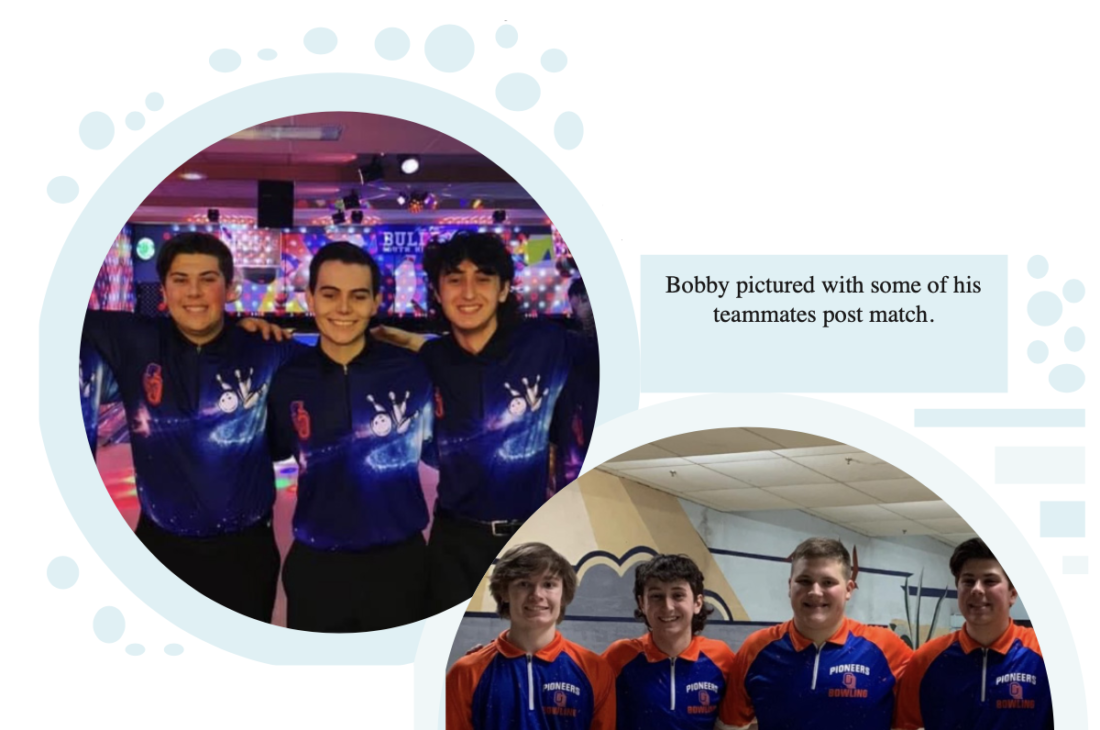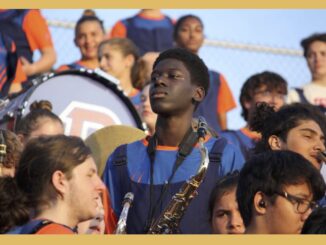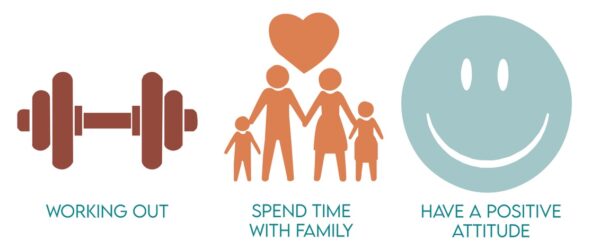
In the contemporary age of online dating, it’s easier for people to swipe right or left than for them to go out and introduce themselves to a potential significant other. Different generations interpret love in different ways, and nowadays Generation Z is turning to apps like Tinder, Bumble, or Snapchat to meet others. But perhaps, a true connection might be lost in cyberspace.
In the olden days, times were simpler. Whether it be going out and meeting a love interest at a bookstore or just having the confidence to go up to someone, Generation Z has lost this sense of connection.
According to a blog post by Kaspersky Daily, “Digital technology, especially smart devices, have transformed many aspects of our society, including how people meet each other and establish relationships — romantic or otherwise. How we conduct our relationships is changing, and it’s clear that technology has a key part to play in this change. People are now not only turning to their devices to work, shop and play, but to manage their personal lives and relationships too.”
For the baby boomer generation, smartphones didn’t exist, so options were limited if they wanted to experiment with dating; in person or talking on the landline.
“When I was 3, I met people through dance classes.” Baby boomer, Suzie Altier said. “In school I met people there. Even on vacations I would meet other kids and we would write letters back and forth until we saw each other on vacation again. In our neighborhood, I would stand on my friends’ porch and call their names to see if they would come out to play.”
New data from YouGov finds that for at least the first stages of dating, younger Americans are more comfortable in an online dating environment. One in 11 Americans say they’re currently using dating apps, and another 28 percent say they have done so in the past. Millennials (17 percent) are far more likely than Gen X’ers (9 percent) and Baby Boomers (3 percent) to say they’re currently using dating apps and websites. Similarly, they’re also more likely to have used them in the past, even if they aren’t doing so currently. (39 percent of Millennials vs. 30 percent of Gen X’ers and 17 percent of Baby Boomers).
However, reflecting on relationships in modern times, Altier said. “Relationships today are very different. Electronics changed the world. Some good, some not so good. So look at the person you are talking to. Communicate face-to-face. Be kind, and find something good about each person.”
Although dating apps have their benefits – like convenience and the ability to converse before going on a date – many Americans would still prefer to meet someone offline. Close to half (47 percent) of Americans say that if they were single and dating, they would prefer to meet a romantic partner without using a dating app or website. Just 12 percent state a preference for meeting someone through a dating app, and 25 percent say they have no preference, according to YouGovAmerica.
Not only did Baby Boomers meet each other differently, their relationships followed different trends than younger generations.
“My parents modeled what a healthy, loving relationship should look like,” AP Government Teacher, John Carmichael said. “They married when they were 21 years old and have been married for 60 years — so generationally, it’s very different. I was always so busy with everything, so I would just meet people. The big thing is you can’t be afraid to ask—you know “do you want to go do something?”
Youth dating culture changed significantly throughout the 1950s and 1960s. In the early postwar years, the previous system of dating many different people was replaced by the ideal of “going steady” with a single partner, according to encyclopedia.com, and Boomers saw marriage as a way to achieve mutual happiness and fulfillment rather than primarily child rearing, according to a 2010 Pew Survey.
“Make sure you know someone well before you make a long term commitment.” Says science teacher, Tammy Sensibaugh. “Do not rush into marriage. I think dating someone for a year before marriage should be the minimum to know if you wanna spend the rest of your life with them.”
The quest for happiness for the Boomer generation was impossible to maintain given they were outliving their parents, who generally stayed married, and many Boomers found their way to divorce.
According to the U.S Bureau of Labor Statistics, 87 percent of baby boomers born in the years 1957-1964 had married at least once by the time they reached age 46. Of those who had married, 45 percent had experienced at least one divorce. And, in 1980, the majority (68 percent) of Baby Boomers aged 25-34 were married. This proportion decreased by 41 percent over the past few decades, with only two-fifths of Millennials currently married in 2015, according to research gathered at Bowling Green State University.
For the boomer generation, breakups have traditionally been a fairly official matter—falling just short of a legal documentation of the event. Conversely, for the younger millennial generation, the breakup paradigm has shifted into something much cloudier.
Generation X, people born between 1965 to 1985, and millennials, people born between 1981 to 1996, are the “inbetweeners” stuck between the baby boomers and the young generation, Generation Z.
Gen-Z is the generation currently in high school and Gen-X and millennials are often the parents of this generation. Times have greatly changed since 1965, and this includes dating. What dating was like in the late 80’s and 90’s is much different than what it is like now.
Laura Carder, a former world history teacher whose daughter attends the school, elaborated on the differences between how dating used to be and how it is now.
“What is different is social media. I feel like students can meet a ton more people from other schools through Snapchat. We knew some people from other schools but not a lot and only if we happened to meet them in person,” Carder said.
This social media link is something that many experts agree upon that changed dating. According to psychalive.org, social media and dating apps offer convenience in finding potential partners as people have access to vast amounts of information with a few clicks. So, while Gen-X would go on blind dates or be paired together by friends, it is unlikely that today anyone would attend a blind date without having some idea, from social media or other sources, what their date is like.
English Teacher Laura Calland agreed with this idea, saying that social media may add pressure or expectations to high school dating.
“What is different is social media. I feel like students can meet a ton more people from other schools through Snapchat. We knew some people from other schools but not a lot and only if we happen to meet them in person,” Carder said. Already used this quote… pls change lol
Before social media, Calland elaborated that the pressure of posting or maintaining a social media image was nonexistent; people were able to enjoy each other’s company. Carder disagreed saying that this part of dating is similar to how it is now.
“You would hang out together at each other’s house, friends’ houses, go out to eat, go to the movies,” Carder said.
She believes that this aspect is still the same as today despite the difference of social media. Carder also explained that there is less pressure to date or find a date for Gen-Z than there was for Gen-X and millennials.
“We had regular dances throughout the school year, which were usually way more fun than homecoming. Everyone hated that pressure of trying to make sure you had a date by the time school started because homecoming was a month later,” Carder said.
The difference is that today, Carder explained, it is more socially acceptable to go with a group of friends rather than with a date.
This pressure to be in a relationship for Gen-X and millennials may contribute to why the divorce rate is so high and the marriage rate so low for these two generations. According to statista.com, 53 percent of Gen-X and 44 percent of millennials married between the ages of 23 and 38, around a 10 percent decrease from previous generations, such as the Boomers. (capital B or no?)
“I would say that healthy and fulfilling relationships are possible. Don’t settle for someone who is not genuinely supportive and loving simply because of pressure or a desire to be ‘in a relationship’,” Calland said.
Calland is on the border of Gen-X and millennials and this advice reflects the outlook of many millennials, according to bentley.edu. They say that women specifically are getting married later, and are likely to have higher access to education. In comparison to the baby boomers, there was a change in gender roles, allowing women to pursue investment in their career rather than relationships.
Thus, without the presence of social media, Gen-X and millennials had a very different experience with dating in high school then Gen-Z, but has to adapt to the new advances in the current dating world.
Generation Z includes people born between 1997 and 2012. A lot of major events and inventions happened in that time period that have changed dating and romantic relationships for the generation.
Smartphones and social media were both invented and popularized in the 2000s decade while a majority of Generation Z was growing up. As a result, Generation Z has a wide variety of new social norms that have an effect on romantic relationships.
Smartphones are very commonly used by Generation Z teenagers and young adults. Smartphones didn’t exist while other generations were growing up and having young relationships; these devices change how a lot of people communicate and interact.
“Smart phones have affected my relationships because conversations can take place mostly through the phone which can lead to fewer in-person conversations,” sophomore Keegan Knupp said.
Smart phones and technology can lead to people meeting in different ways other than in person.
“Technology would be the biggest difference, and from what I hear it’s just so hard to meet people. People just don’t meet people in-person as much as they used to, especially when they’re out of school,” School Guidance Counselor Sarah Hanna said.
Meeting people online rather than in-person can be viewed in different ways because of its different effects.
“A negative is that people could only be communicating through the phone, which could be hard to understand what a person is meaning to say,” Hanna said.
Another factor that separates the Generation Z dating experience from previous generations is social media. Social media apps such as Snapchat, Instagram, and TikTok are very popular amongst Generation Z.
“Social media plays a huge factor in relationships especially today. It has helped with communication, but it can also pose a threat to trust. However, if you can get by that, it really doesn’t intervene a whole lot,” sophomore Graham Burnett said.
Social media can also be used in negative ways that negatively affect romantic relationships.
“As technology got more involved, things started to change; you never used to have to worry about snapchat or instagram messages. Things that could cause riffs in relationships,” Hanna said.
Advances in technology have also allowed people to have a greater social outreach.
“It allows us to meet people beyond our immediate circles, to keep in touch with people regularly from afar, and, in terms of dating, allows us to do the ‘early work’ of getting to know someone by giving us access to the virtual presentation of their lives,” , Philosophy Professor at Boston College Kerin Cronin said.
Dating apps have risen in popularity alongside social media and smart phones and have had a large impact on Gen Z dating.
“The algorithms of dating apps do a lot of the curating of the experience of meeting people, so that we don’t have to vet people. It vets them for us. But then it also offers a chance to do all of the “getting to know you” work from the comfort of our place behind the screen. So, when people do finally meet, the intro conversations are unnecessary in some sense and that actually creates awkwardness,” Cronin said.
Some believe that Gen Z relationships have been harmed by social media and dating apps.
“I notice that Millenials and Gen Zers struggle mightily with transition and feel a tremendous amount of stress and anxiety connected with basic social interactions. I think their use of technology to do the basic work of socializing and their habits of being behind screens ends up hobbling their social muscle-building,” Cronin said.
One new social norm that has been popularized with Generation Z dating has been the “Talking-stage”. Many teens view the talking-stage as a phase of dating that happens before a couple becomes official.
“The talking stage is when you’re not fully committed to dating someone and you’re seeing how they are as a person before you really commit,” Burnett said.
The talking stage can be used to get know the other person that someone is pursuing.
“The talking stage can be really hard, but it builds your connection with the other person,” Knupp said.
The talking stage can be perceived differently by different people which can cause confusion and tension within a relationship.
“Some people would say if they’re talking to someone then they shouldn’t be talking to someone else while other people think it’s open which adds more confusion,” Hanna said.
Generation Z is growing up in a more accepting and open world which can positively impact relationships.
“But a positive thing of this generation is that gen z can be more open about their mental health and relationship goals,” Hanna said.
Social and technological shifts have made dating more convenient but also more casual for many of Gen Z.
“Gen Z dates in a much more casual way. Marriage and family are not on their horizon in dating before age 25. Thus, much of their dating tends to be non-committal and irregular,” Cronin said.


